by Michael R. Allen
Today we are two weeks away from the day when a severe squall line moved through St. Louis, but for some people that is not a lot of time. On the north side, several neighborhoods are still dealing with widespread property damage and the looming uncertainty of whether homes will remain homes. Some owners lack insurance, while others may have policies with deductibles above the costs of repairing damage. Those costs may still be prohibitive for elderly and poor residents.
Yesterday this blog showed scenes from the Ville (see “Ville Area Still Recovering from New Year’s Eve Storm”). Today let us turn our attention to the Lewis Place neighborhood to the southwest of the Ville, where damage to the historic buildings there is even more widespread. Lewis Place has made it through the ravages of demolition, abandonment and disinvestment and has been on the upswing in recent years. Disaster was the last thing Lewis Place needed.
On Sunday, Lewis Place Historical Preservation, Inc. President Pam Talley showed myself and Lynn Josse the damage that compels our assistance — and yours. What we saw demands St. Louis’ full attention.
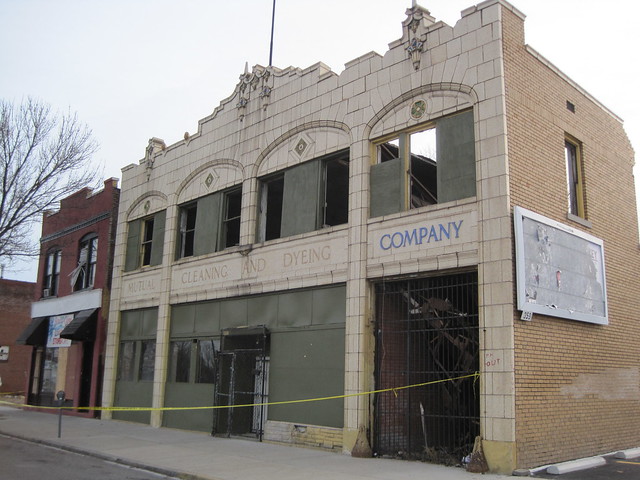
Just one block south of the apartment building at Deer and Aldine avenues that suffered a collapse is an ornate two-story, terra-cotta clad building on Dr. Martin Luther King Drive. The former dry cleaning plant, with its baroque facade, is little more than a front wall after New Year’s Eve. The one story rear wing collapsed completely and much of the two-story front section fell in on itself. Demolition of the privately-owned vacant building is next, no doubt, but the front elevation ought to be salvaged.
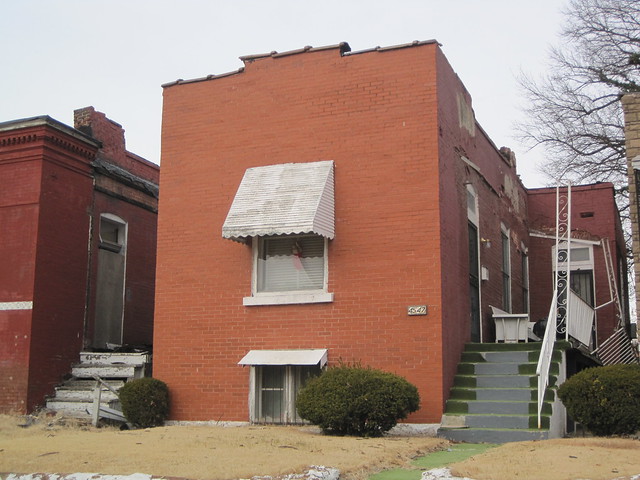
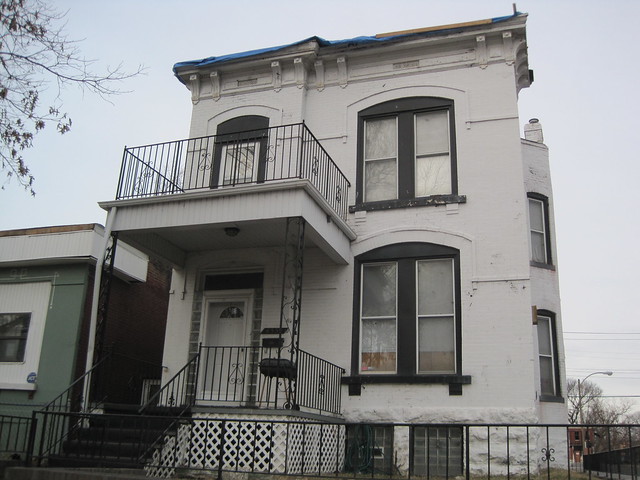
One block south, damage is intense in the 4500 and 4600 blocks of Evans Avenue. Few houses escaped broken windows, many lost or small large parts of their roof and some even lost their wooden or metal porches.
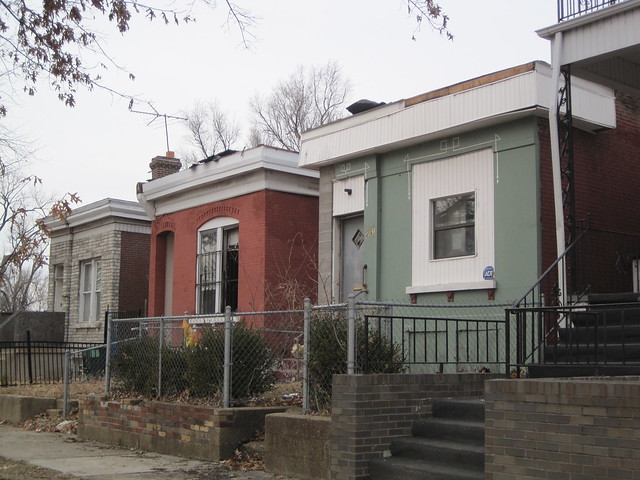
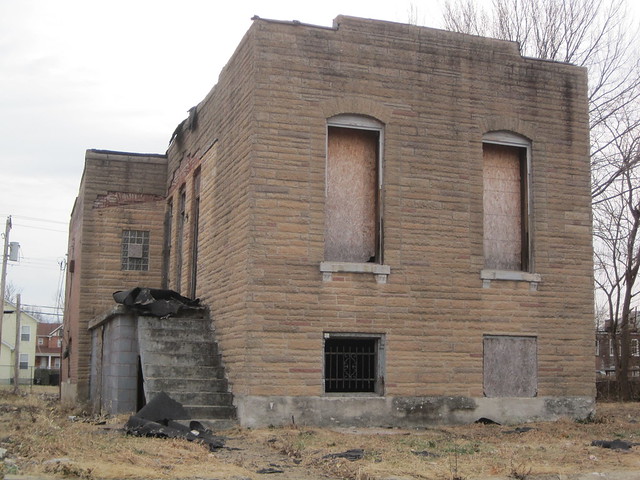
Lewis Place storm damage was not limited to historic buildings. New houses on Page Boulevard lost siding and shingles and suffered broken windows. However, like most neighborhoods in north city, Lewis Place’s housing stock is mostly composed of historic buildings. That means most damage affects older homes that are more difficult to insure adequately and that already have maintenance problems that often drive up repair costs.
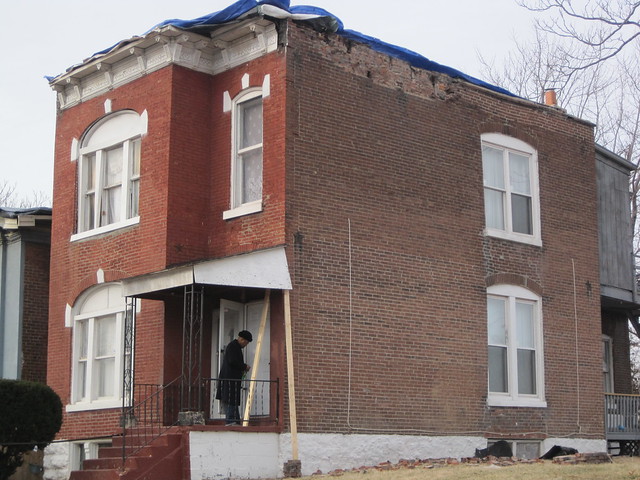
We saw damage on streets throughout Lewis Place, including Vernon Avenue, Newberry Terrace, McMillan Avenue, Kensington Place and Enright Avenue. Pam reported that the city’s Forestry Division — usually not a timely factor in Lewis Place events — swept in quickly after the storm and worked throughout New Year’s weekend to clean up the large amount of tree debris generated by the storm. Still, such debris was piled everywhere. Most of all, at every turn we saw boarded windows, asphalt roofing material on the grounds, brick bats from chimneys and parapets, sagging porches, maimed fences and signs that something terrible had happened. Simply, we were tracking the path of a disaster.
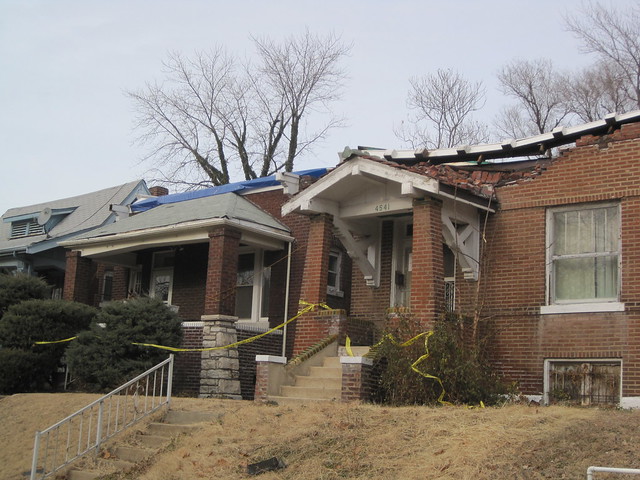
When Pam took us to Lewis Place itself, our hearts sunk. The houses that were so essential to the civil rights struggle that made what we now call St. Louis possible stood with yellow caution tape in front. Some had collapsed front parapet walls. Others had boarded up windows, missing roofing and — in one particularly unnerving instance — a frozen waterfall under a window on a vacant house. Even #10 Lewis Place was ailing with its front porch collapsed. Dr. Robert and Fredda Witherspoon, who in the 1940s organized fair-skinned African-Americans to purchase homes on Lewis Place to break down restrictive covenants, called this house home for decades.

Pam told us that the Building Division rushed in after the storm, and had condemned houses the day of the storm. This is standard operating procedure following a disaster, because unsafe buildings must be vacated, but it still seemed insensitive to residents. Lewis Place Historical Preservation raised the money to hire a structural engineer for one resident who is being threatened with condemnation and eviction. Others face potential fines for code violations due to storm damage. This is a sad state for a street that has been a National Register of Historic Places historic district since 1980 and whose residents care deeply about both their neighborhood’s past and future.

While the Building and Forestry divisions of the city treated the storm in Lewis Place like a disaster, other entities have not been so swift. While state officials and mayoral chief of staff Jeff Rainford visited the day after the storm, government assistance has not arrived yet. Pam says that the Salvation Army took eight days to send volunteers. Still Pam has not let the lack of response down — she has secured tarps, blankets and other items for needy residents. By the snow fall on Monday, only three houses with roof damage lacked tarp protection. Pam and her neighbors are used to doing things for themselves, and really are quite good at it. Still, they can’t do it alone — nor should they.
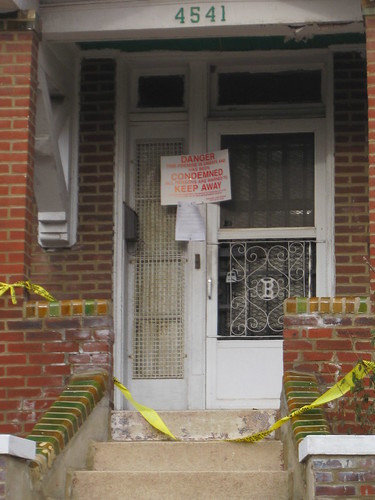
What You Can Do
Lewis Place needs our help! This historic neighborhood is part of our collective heritage, and we need to shoulder it through this rough moment. Consider helping by making a donation.
Assistance for the residents — a high percentage of them senior citizens — is welcome. Items needed are:
• Food items, both perishable and non-perishable, water, juice
• Blankets, toiletries such as toothpaste, tissue, mouthwash and soap
• Clothing such as gloves, caps, scarves, socks and underwear
• Trash bags
Donations can be made at Centennial Christian Church, 4950 Fountain Avenue, St. Louis 63108 between 9 a.m. – 2 p.m. The contact at the church is Cheryl Poynter at 314.367.1818.
Financial donations are needed, too, to assist homeowners with repairs and rebuilding. Checks can be made out to Lewis Place Historical Preservation, 3920 Lindell Blvd., Suite 206, St. Louis, MO 63108, and Attention Pam Talley. For information about how you can help, contact Talley at 314.535.1354.
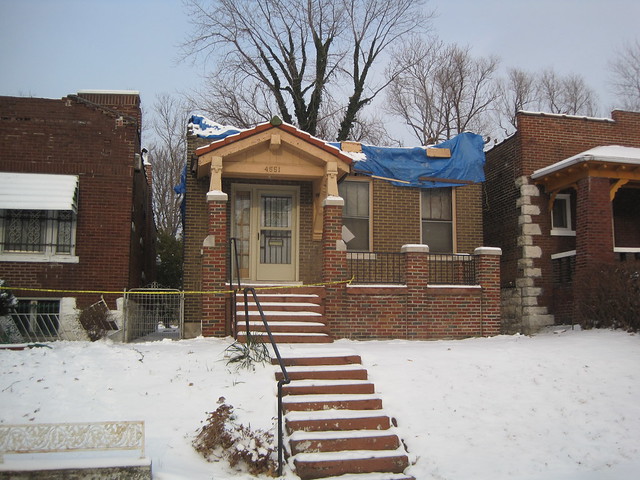

2 replies on “Two Weeks Later, Lewis Place Still Suffering from Storm Damage”
Thanks for keeping this tragic situation in the forefront, Michael.
It was really shocking to see the damages of the storm, and there was still bad weather in some parts of the State just last week. Hail storms can be one of the worst to damage houses in communities. Hope the distortions will be fixed, soon.